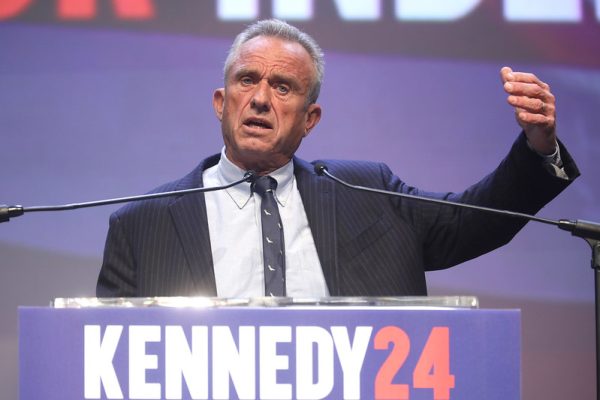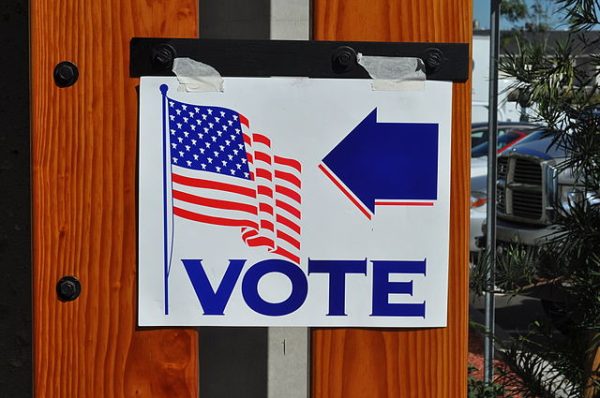Australia’s wildfires show the grim reality of climate change
Tori Johnsson, ’23, draws parallels between Australia and the U.S. in response to climate change
February 11, 2020
Australian Prime Minister Scott Morrison is having a difficult time right now. When southwestern Australia went up in flames, he was vacationing in Hawaii with his family. News.com. au reported that when he returned, he was met with intense criticism from Australians. Morrison’s tone-deaf behavior is only the most obvious symptom of Australia’s current crisis.
Morrison’s behavior when meeting wildfire victims and firefighters was a bit lacking in interpersonal awareness. An example of this is when he grabbed people’s hands when they weren’t willing to shake his. News.com.au reported that his refusal to implement new climate change policy rings hollow to many Australians. Prominent Australian political figures, including former Prime Minister Malcolm Turnbull, are calling for Morrison to take action on climate change. But no matter how bad Morrison’s lot may be right now, Australia’s crisis is felt around the world.
Southwestern Australia has experienced enormous loss of animal habitat and population due to brush fires. Up to half a billion animals are believed dead, based on University of Sydney estimates reported by News.com.au. According to the Australian Broadcasting Corporation, pollution levels in Sydney have been over 12 times the hazardous level. Burnt-orange hazy skies hang over cities at midday, and smoke from the fires has caused similar views in New Zealand 1,000 miles away. Hundreds of homes have been lost, and people have been forced into large-scale evacuations. Volunteer firefighters continue to work as they have for months. As it’s volunteer work, the monetary compensation they are entitled to is extremely limited. Firefighting is a full-time job.
Liberal.org.au and the Sydney Morning Herald reported that the Liberal Party, a major, center-right force in the Australian legislature, has been pulling back on environmental restrictions and filling their obligations to reduce emissions with carryover credits from previous international agreements like the Kyoto Protocol. This is a move that has intentionally not been pursued by other signatories. Liberal Party policies roughly parallel those of U.S. Republicans.
The Liberal Party government has been running a tricky balancing act between concrete action to combat climate change and support for economic interests that back the coal industry. Abc.net.au reported that a massive new coal mine was permitted in Queensland province, despite objections from environmental activists who say the coal burnt would skyrocket pollution and indigenous people whose prior claim to rights over the land has been tied up in court for 15 years. This balancing act leaves all of Australia in the lurch. Liberal Party ministers minimize the potential harms of climate change. As temperatures skyrocket, temperature increases from year to year and fire seasons grow over time. The real losers are the Australian people, wildlife and environment.
Australia’s most chilling lesson for the U.S. is that we may have it far worse. At least Morrison believes climate change exists and supports doing something about it, even if his responses have been lackluster. President Trump’s climate change views fluctuate wildly based on circumstances. CNN reported almost a year ago that Trump retweeted a complete denial of the existence of climate change. The Hill reported that just one month ago he said that “nothing’s a hoax” about climate change, while on the same day repealing environmental protections governing new highway and pipeline approvals.
In the U.S., environmental regulations have relaxed over the last few years. More areas of federal land and national parks have been opened to development. More oil and gas exploratory drilling has been allowed. Oil and gas companies have been granted control of the narrative surrounding climate change in a similar way to Australia, spending millions of dollars over time on lobbying to reduce regulation. After witnessing Australia’s experience, I do not look forward to fire season in the West this summer
Paying lip service to environmental preservation without real commitment. Taking only minimal steps to appease both the public and the oil and gas industries. These are not actions that anyone should expect from their elected leaders, and that’s not what the world needs right now. In the 1970s, climate change was a known and discussed problem across party lines. Climate change should be a bipartisan issue now, here and everywhere.
The continued viability of Earth as a place for all life is an incredibly important cause, no matter the political party. Drastic action is required, but the specifics of that action will eventually be determined by who votes and who is elected.
It’s time to make climate change a bipartisan issue again. Don’t be afraid to support action on climate change, to make a world where our family and friends can continue to pursue their goals and improve their societies without fear. It might not be as obvious as Australia’s wildfire struggles, but climate change is already in our own backyard.












